Grinding aids and strength enhancers are well known for their ability to increase cement mill productivity, and the mechanical strength of mortar and concrete. However, little information is available on the potential drawbacks of their usage. To close the gap, Sika Services addresses the possible impacts on health and safety and the environment, and on cement properties in production and use.
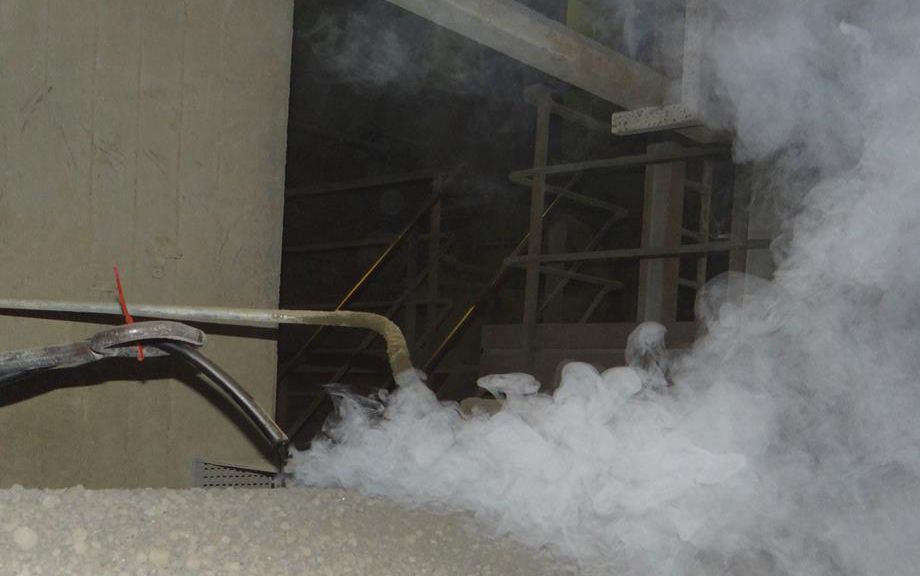
Grinding aids, strength enhancers and quality improvers are based on chemical products. Grinding aids work mainly by dispersing ground cement particles to avoid agglomerates, enabling an increase in production of up to 25 per cent.1 In vertical roller mills, they can additionally be used to reduce vibrations and the amount of water injection, and thereby improve cement quality.2
Strength enhancers chemically interact with the cement during hydration.
Depending on the clinker composition and the strength enhancer, it is possible to achieve an improvement of up to 8MPa in the early and late compressive strength of the mortar prism.3
However, cement additives contain chemical products that can have an impact beyond these effects, as discussed below.
Health, Safety and the Environment
The work undertaken by the Cement Sustainability Initiative (CSI) was officially transferred from the World Business Council for Sustainable Development (WBCSD) to the Global Cement & Concrete Association (GCCA) as of 1 January 2019. The number one priority for the GCCA is health and safety, both in terms of its promotion and supporting its members and the sector when monitoring and reporting workplace performance through a set of aligned key performance indicators (KPIs). The GCCA and its members strive to achieve zero harm for all employees, contractors and anyone who comes into contact with its businesses. As such, it provides guidance for all members to help meet health and safety-related requirements.4
The cement production process involves many potential health and safety risks. While incidents involving cement additives are rare, these chemicals must still be handled with due care and attention.
To assist with these efforts, all the necessary information and measures can easily be obtained from Safety Data Sheets (SDS). Guidance includes:
- Most cement additives that are stored in single-walled storage tanks and containers (intermediate bulk containers) must additionally be placed in a retention area or in secondary containment.
- Gloves that contain textile materials are unsuitable. Therefore, chemicalresistant, impervious gloves (ie, Viton gloves) should be used instead
- Cement additives are mainly dosed onto the clinker belt close to the inlet of the mill. Frequently, the clinker is hot and parts of the cement additive evaporate (as can be seen in Figure 1). Therefore, good ventilation must collect the evaporating gases and/or respiratory protective equipment should be used. Alternatively, the cement additive can be sprayed into the mill.
| Sample 1 | Sample 2 | |
| Clinker (%) | 100 | 80 |
| Limestone (%) | 0 | 20 |
| Blaine (cm2/g) | 2515 | 3295 |
| Sieve retention 32μm (%) | 32 | 35.6 |
| Powder flow, ring shear, flow function coefficient (FFC) | 2 | 1.32 |
| Pack-set index | 9 | 101 |
Table 1: Comparison of powder flow and pack-set of ordinary Portland cement (Sample 1) and Portland limestone cement (Sample 2)
Powder Flow
Grinding aids reduce the attraction force of finely-ground cement particles and avoid agglomeration. Consequently, separator and mill efficiency increases, which reduces energy consumption. Moreover, the fluidity of the cement powder rises, which facilitates its transportation on air-slide conveyors, as well as with the unloading of silos, particularly dome silos, and silo vehicles.
In particular, Portland limestone cement (PLC) when co-ground in a ball mill has the tendency to be ‘sticky’ (see Table 1). Consolidation over time and/or a vibration and rocking motion heighten the issue. Powerful grinding aids avoid this stickiness. They broaden the interfacial gap between the limestone particles and thereby boost the powder flow of PLC.5 However, a potential disadvantage of good powder flow is the backflow of cement on an inclined conveyor belt (see Figure 2).
Dust Formation
Due to their nature, mill buildings are prone to dust contamination. The finer that the cement has to be ground, the higher the amount of airborne and settled dust. To protect workers, dust formation must be reduced at the point of origin as far as possible. In addition, all employees and third parties visiting the mill house must wear respiratory protective equipment.
The nature of grinding aids means that they promote the formation of dust because they reduce the agglomeration of the finest particles (see Figure 3). In certain cases, the filter and/or the hopper of the bag filter can become overloaded. This can lead to the wrong supposition that the grinding aid chemically attacks the filter cloth. In fact, this is not the case, as the filter is only plugged with the fine particles.
Quality assurance testing of cement additives in a laboratory is recommended, especially if there is a change in product/ supplier. Quality control can be achieved with simple and efficient equipment.
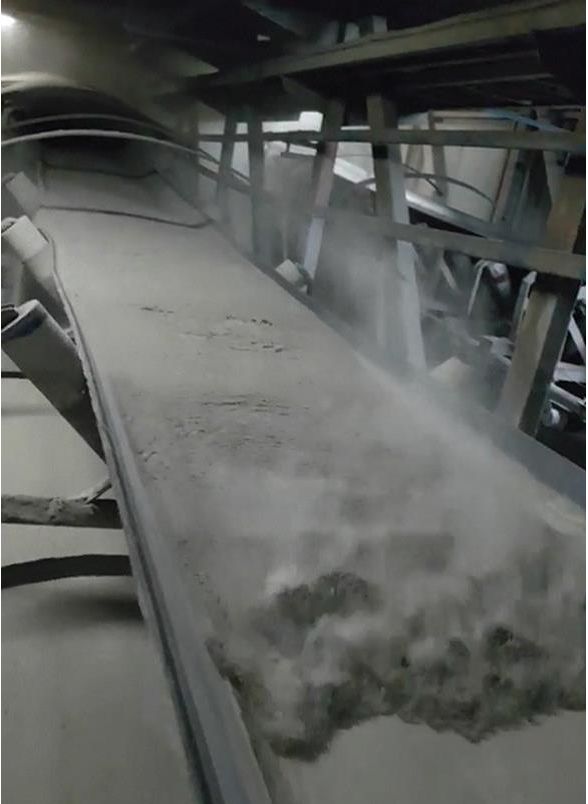
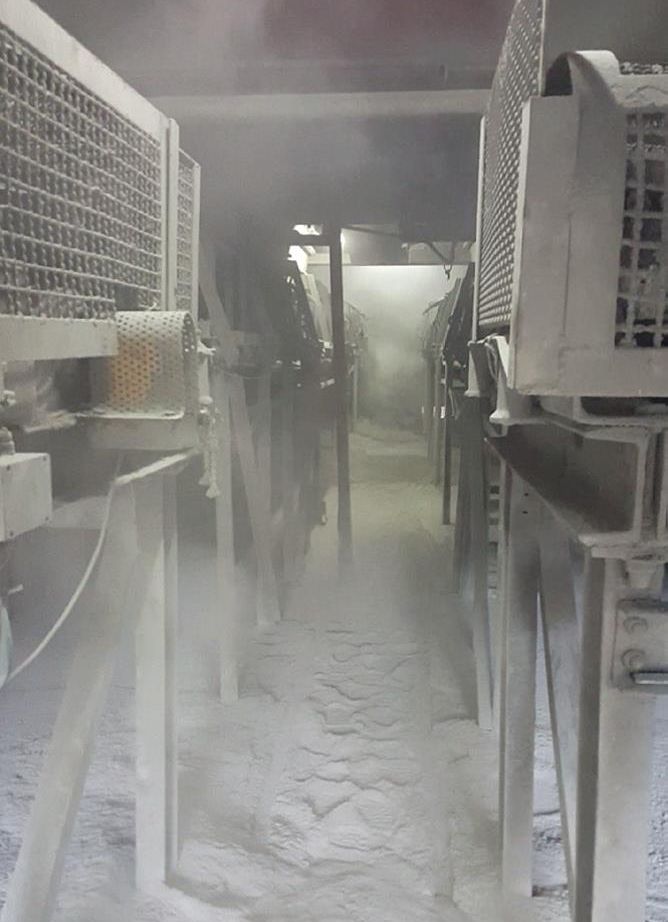
Material Issues
Cement additives consist mainly of organic compounds, but may also contain some inorganic salts such as chlorides. The raw materials that are used for their production are available in different qualities and cost. The most economic qualities can contain liquid and solid impurities that affect cement grinding or the finished product.
Impurities can have the following consequences:
- cause damage to dosing equipment
- introduce air and foam in the mortar or cement slurry
- separation, ie sedimentation of solids or floating of liquids
- instability and decomposition, which may result in an offensive smell of the grinding aids and even of the final cement.
Therefore, quality assurance testing of cement additives in a laboratory is recommended, especially if there is a change in product/supplier. Quality control can be achieved with simple and efficient equipment.
The general criteria to keep in mind are:
- aspect, smell
- density
- foam test (see Figure 4)
- pH-value
- infrared spectrum (to compare with former deliveries)
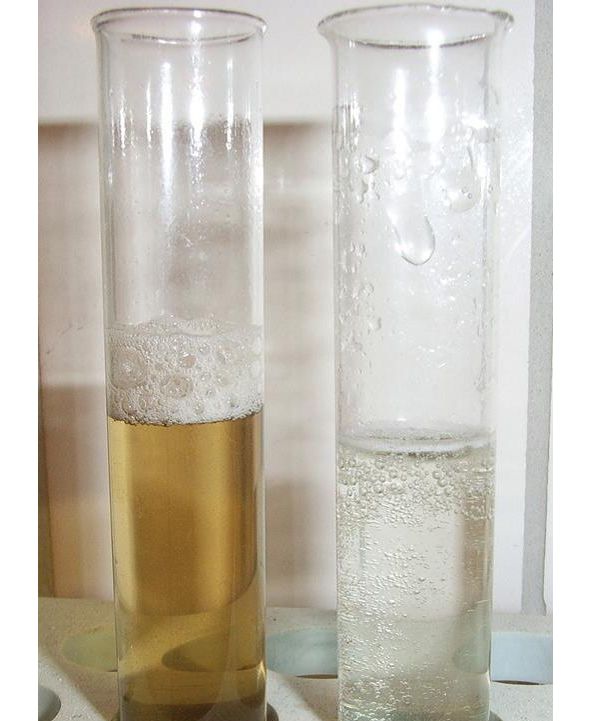
Discolouration of Concrete Surfaces
The brown discolouration of concrete surfaces is an aesthetic fault (see Figure 5). Among the many reasons for discolouration is the migration of iron salts. This phenomenon is mainly observed on concrete paving stones, and can appears days or even years after an installation.
Iron ions can be dissolved from the cement or the aggregates into the alkaline pore solution. A moisture gradient is needed for the transport of the ions to the concrete surface, where they are oxidised and discolour calcite crystals. Certain grinding aids, especially alkanolamines, significantly increase the solubility of the iron by complex formation that increases the possibility of brown discolouration. A test was developed to allow a quantitative assessment by colour measurement.6
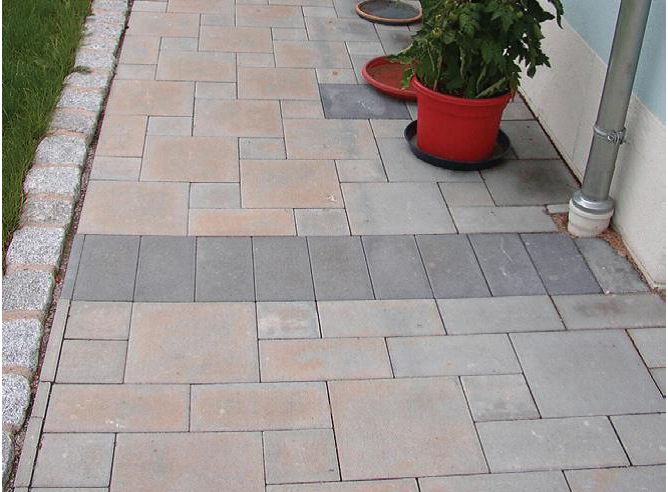
Corrosion of Reinforcement
Chloride-based strength enhancers have delivered excellent results and are very economic. However, chlorides can destroy the alkaline passivation of rebar and accelerate the electrochemical corrosion process. The particularity of chloride-induced corrosion is the fast, local reduction of the cross-section. The maximum chloride-ion content by mass of cement according EN 197-1 is 0.1 per cent for reinforced concrete and less for pre-stressed/post-tensioned concrete. In particular, increasing alternative fuel usage can lead to a certain chloride content that makes the use of chloride in cement additives impossible.
Although not compulsory, it can be advantageous to determine the effect of a cement additive on the corrosion susceptibility of reinforcing steel with a potentiostatic electrochemical test according EN 480-14:2007-03 (see Figure 6). The test measures current density and includes a visual inspection of the rebar afterwards (see Figure 7). It is important to collaborate with an experienced testing institute, eg the MFPA in Germany has the required equipment and knowledge.
Understanding and Addressing the Impacts
Cement additives are, without doubt, highly beneficial in the production of cement. They are widely used to increase cement mill output and decrease specific energy consumption. Strength enhancing additives can be applied to improve cement quality and also to reduce the clinker factor.
To prevent any unwanted effects, it is necessary to have access to information on all critical aspects. Cement additives can have an influence on powder flow, dust formation, concrete discolouration and the corrosion of reinforcement. Moreover, it is imperative to address all the associated health and safety as well as the environmental aspects.

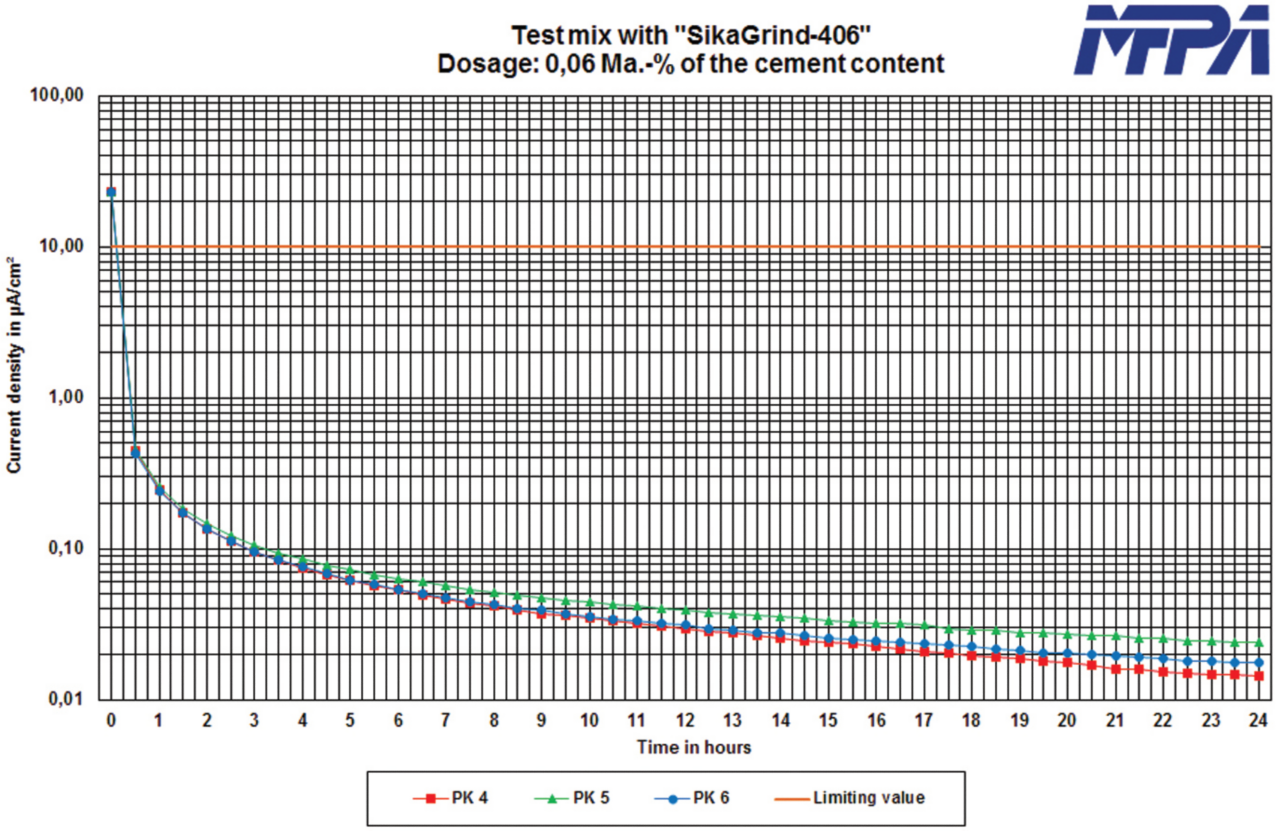
References
- Locher, FW (2000) Zement, Grundlagen der Herstellung und Verwendung. Düsseldorf, Germany: Verlag Bau+Technik, p118..
- Dietrich, M (2018) ‘Progress with cement additives for VRMs’ in: GC, June, p14-18.
- Bhatt y, JI, Miller, FM, Kosmatka , SH, AND Bohan, RP (2011) Innovation in Portland Cement Manufacturing. Skokie, USA: PCA, p747.
- GCCA (2018) GGCA Sustainability Guidelines for the monitoring and reporting of safety in cement manufacturing. https://gccassociation. org/wp-content/uploads/2019/04/GCCA_ Guidelines_Safety-v0.pdf
- Dietrich, M (2016) ‘Performance enhancer for PLC’ in: GC, June, p25-28.
- Haerdtl , R, Tax, M, Bolte , G & Dienemann, W (2003) ‘Reducing the risk of brown discoloration of concrete products’ in: Betonwerk und Fertigteil-Technik/Concrete Precasting Plant and Technology, 69 (11), p34- 46.
Download the Article

Author
Matthias Dietrich
Corporate Product Engineer: Cement Additives
Target Market Concrete
Sika Services AG


